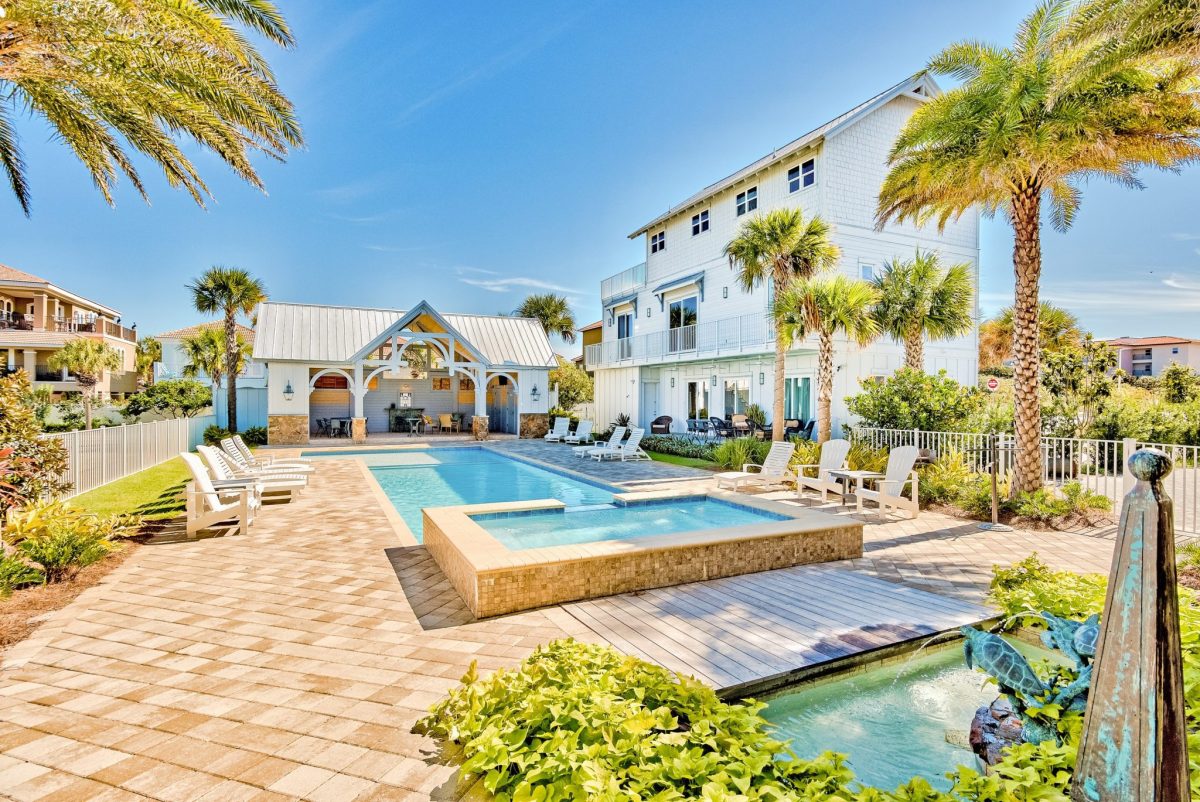Florida’s Short-Term Rental Squeeze

Skift Take
The sunshine state of Florida is the nation’s fastest-growing state population-wise for the first time since 1957. In the 1950s, it was newly popular air conditioning that brought people to Florida, and today it’s remote work.
By September 2022, Florida had welcomed 58.9 million overnight visitors staying in vacation rentals alone, according to the Oxford Economics’ economic impact study done in 2022. Even so, Florida is also the least affordable state to live in — monthly rent in Miami can be as high as 60% of a household’s income, according to a housing affordability study conducted by Realtor.com
Florida has always been a formidable destination for vacation rentals, but it’s increasingly becoming unaffordable for visitors and residents alike.
Vacation Rental Trends in Florida
At the height of the pandemic between 2021 and 2022, some 58.9 million overnight visitors collectively spent $13.8 billion on vacation rentals in Florida, Oxford Economics said in its economic impact study. These travelers generated 49.2 million room nights across 221,600 properties on 15 million trips. If those stats seem heady, they should.
The South Florida Business Journal published a study in May that found that Miami has the most Airbnb short-term rental listings per 100,000 people in the country.
At the rate it’s going, Miami will be home to quite a few short-term rental buildings. Developers are building condominium units that are already licensed to be short-term rentals “irrespective of regulations.”
“We design them as hotels and they have both residential as well as commercial licenses,” said Harvey Hernandez, CEO of Newgard Development Group. The company is developing a 362-unit property in Miami’s main business district. Hernandez added that all but twenty five units are sold, and the building won’t be ready for another three years.
Owners can buy these units to be rented out on Airbnb. Airbnb has been active in Florida making such deals with developers.
“Challenge we are having is how do we supply this demand faster,” Hernandez said.
“We have some 20,000 investors or buyers that have expressed interest, and we add 1,000 more to the list every month.”
However, it comes with a profit squeeze.
Rising construction and labor costs put pressure on developer margins. It doesn’t help that lenders have retreated and tightened big construction loans. Hernandez admitted that despite the demand, it’s harder and more expensive to build.
Florida’s Soaring Housing Prices
While inflation is moderating in most of the United States, Florida tells a different story. The Miami-Fort Lauderdale region witnessed a staggering 9% price surge in May compared to the previous year, while nationwide inflation stood at 4% for the same period. In the Tampa-St. Petersburg area, inflation was slightly lower at 7.3%, still significantly above the national average.
The primary driver behind Florida’s soaring prices is — you guessed it — housing. “You can ask anyone in Florida and they will complain about the high costs,” said Christine Karpinski, who has been part of the vacation rental industry in Florida since the 1990s. “Overall our gross rental revenue for 2023 is about even with last year, however on net, I am down 50% in profits for this year as expenses have skyrocketed.”
Karpinski considers herself lucky that her bookings was set back 18% and not more.
“For the first time in a long time I had a summer week open– our rates have held, even though occupancy was down,” Karpinski said.
Floridians pay some of the highest home insurance in the country. In 2023, the annual home insurance premium in Florida was $6,000. This figure represents a 42% increase compared to 2022. The national average was $1,700 in 2022.
“We have had some major insurance increases and we also had a requirement in a bill passed this year about inspections for condominiums. All these inspection fees, insurances have driven the inability to cover mortgages and to pay for a lot of these rentals,”said Tiffany Edwards, who owns vacation rental properties in Florida and is a strategic consultant for a short-term vacation rental organization.
How does this affect the short-term rental market? Those who wanted to cash in on the pandemic gold rush bought houses to rent at higher daily rates and as the market cools off, those mortgages weigh heavier.
“We’ve had a major increase in licenses from 2020 to 2022,” Edwards said. “We have people who are relatively new to the marketplace and they have only seen those higher ADR numbers, but they bought at the peak of the market. And so they were able to cover their mortgages or those loans for the first year. And I don’t know if that’s necessarily going to happen.”
Rising costs and an increasing socio-economic divide between out-of-state investors and residents is pricing locals and the working class out, often creating a shortage of labor needed to maintain and service these rentals.
“If you price out the locals, you have no services,” said Karpinski. “There has to be a balance between residents and rentals.”
Who’s Coming For the Homes? It’s Either Buyers or Banks
But it’s not easy for the locals to stay local anymore. The median home value in Florida had risen 22% annually at the end of 2022, according to Zillow. Nationwide the number stood at 12% increase over the same period.
Florida Gov. Ron DeSantis signed the Live Local Act into law this year, which among other things, requires a local government to approve the construction of multifamily rental properties in areas zoned for mixed-use residential, commercial, or industrial purposes. That’s provided a minimum of 40% of the residential units in the proposed multifamily development would remain affordable for at least 30 years to individuals earning up to 120 percent of the local area median income.
But even so, as buildings take time to develop, it would be a while until this gains momentum.
But in the meantime, what happens to some of the vacant rental condominiums that have payments pending?
The numbers are already in: In Florida, one out of every 527 housing units is in foreclosure. Overall, the state ranked seventh nationally with 18,530 housing units in foreclosure, according to data released by the Florida Realtors Association in July.
“I think we’re going to see the banks take over a lot of these short term rentals, very similar to what we saw in 2008,” said Edwards. “Now depending on what the local bank is, some of them continue to rent if it’s with a property manager, some of them try to bulk and sell them. So that’s kind of what we saw in our area in 2008.”
Either way, Edwards added that there will be a sharp decrease in the number of vacation rental licenses this year and in the years to come.
Regulated Affairs
One way to limit licenses through regulation.
The state of Florida has a preemption rule that supersedes local regulations, preventing them from banning short-term rentals. While local governments can regulate some aspects of vacation rentals, they cannot limit how often or for how long rentals can occur. Additionally, if a county or municipality had prohibited short-term rentals before 2011, those restrictions remain valid and are grandfathered in.
State legislators have since amended the preemption law permitting communities to oversee rentals under certain conditions. As long as they refrained from outright bans or imposing strict limits on their frequency and duration, all Florida local governments retain a range of tools, including code enforcement, licensing, and occupancy restrictions.
Florida is a state that has tried to balance the interests of investors and its economy, and the wellbeing of locals. What we see play out here is not an uncommon occurrence; rather it’s an emerging pattern across America’s pandemic-fueled boom towns.
The pandemic brought increased demand, and paying guests. But as prices and demand normalize, a lot of these businesses need to strategize better about their next moves.
Florida still has vacation rental demand, but the supply needs reshuffling.




